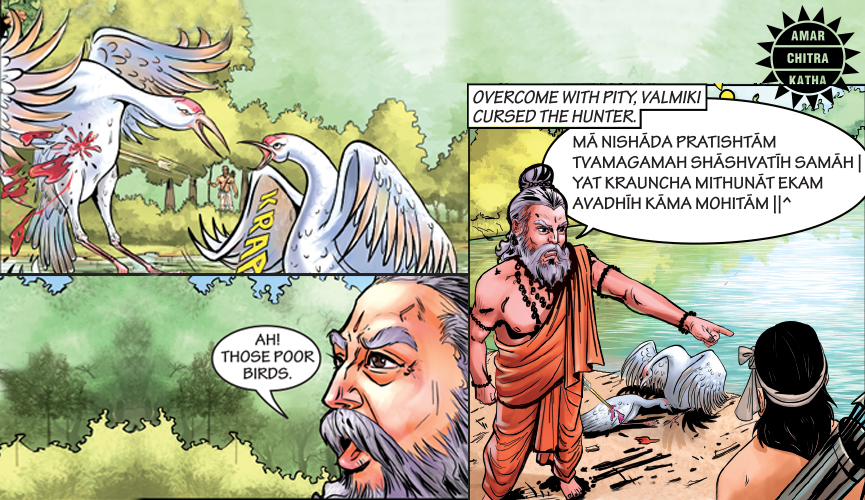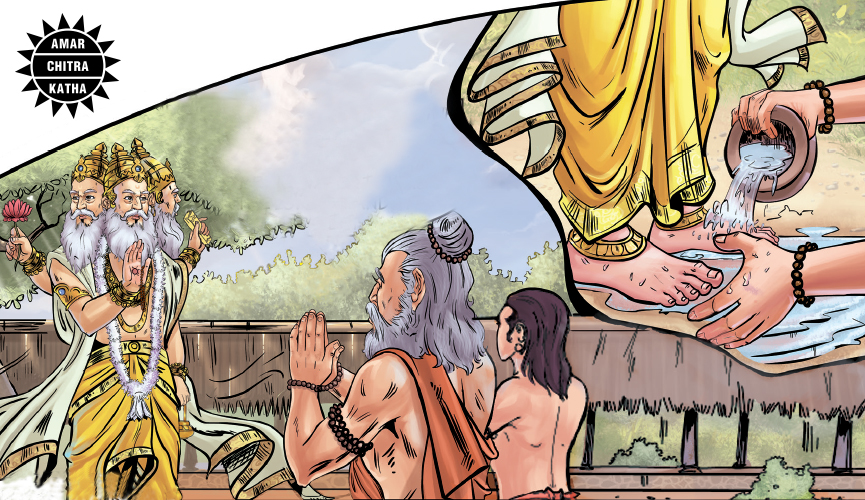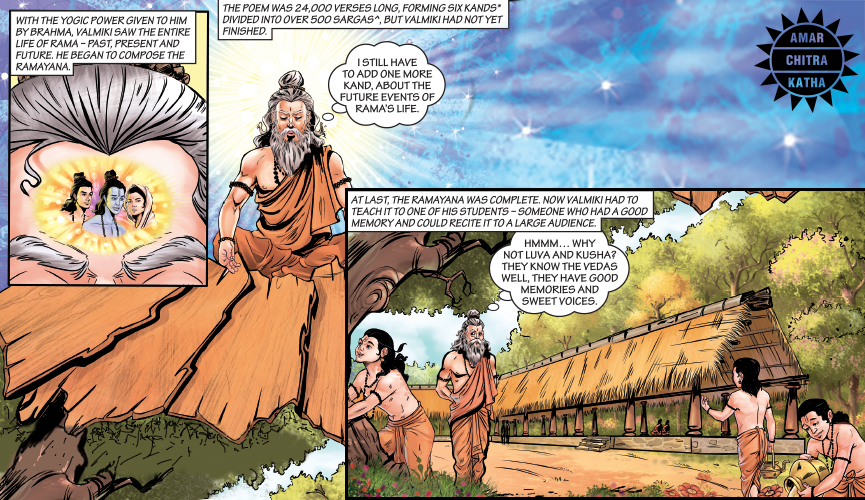By Sandeep Mishra
Valmiki is the author of one of the two greatest Indian epics, the Ramayana. Valmiki is also known as Adi Kavi, which means the first poet. He is widely credited for being a pioneer of Sanskrit literature, defining the shape and form of Sanskrit poetry.
One day, Devamuni Narada was conversing with sage Valmiki and happened to tell him the story of Maryada Purushottam Rama, describing Rama’s many qualities, including truthfulness, bravery, self-competence, and wisdom.
After Narada left, Valmiki went to the Tamasa river for his mid-day baths, where he spotted two crane birds calling to each other and mating. Valmiki was filled with joy seeing the happy birds. Suddenly, an arrow pierced the body of the male bird, killing him immediately. Filled with sorrow, his mate died of shock. Upon seeing this, the enraged rishi could not control himself and cursed the hunter.

“Maa Nishad Pratishtha Twamgamah Shashwatih Samah,
Yatkraunchamithunadekam Avadhih Kamamohitham”
“You will find no rest for the long years of eternity,
for you killed a pair of birds in love and unsuspecting.”
Although he was grief-stricken and in a lot of pain over the death of the innocent creatures, he couldn’t help but notice that the curse he uttered came out in a musical form that could be recited or sung. He narrated the entire incident to his disciple Bhardwaja, who memorised the couplet uttered by the sage while in grief. This then became the first-ever shloka in Sanskrit literature.
The sage continued to brood over the incident, until, one day, Brahma appeared before him and asked him to get over his grief. He inspired the guru to compose the story of Rama in the same poetic meter in which he had cursed the hunter.

To do this, Brahma bestowed on him the divine power to see all that happened, even the thoughts of the characters. With these divine powers, he was able to see the entire life of Rama, the past, the present, and the future. Thus, Valmiki composed one of the longest works of literature the world has ever known, the epic that came to be called the Ramayana, comprising 24,000 verses across seven kandas, divided into 500 saragas.

Traditionally, the story of Rama was passed down from generation to generation orally, and was taught to only a selected few, for the fear of being corrupted. Luv and Kush, the sons of Rama, were the first students who ever heard the complete version of the Ramayana. Today, there are over 300 different versions of the epic across the world, which you can read more about here.
Read Amar Chitra Katha’s retelling of Valmiki’s Ramayana, now available on the ACK Comics app





